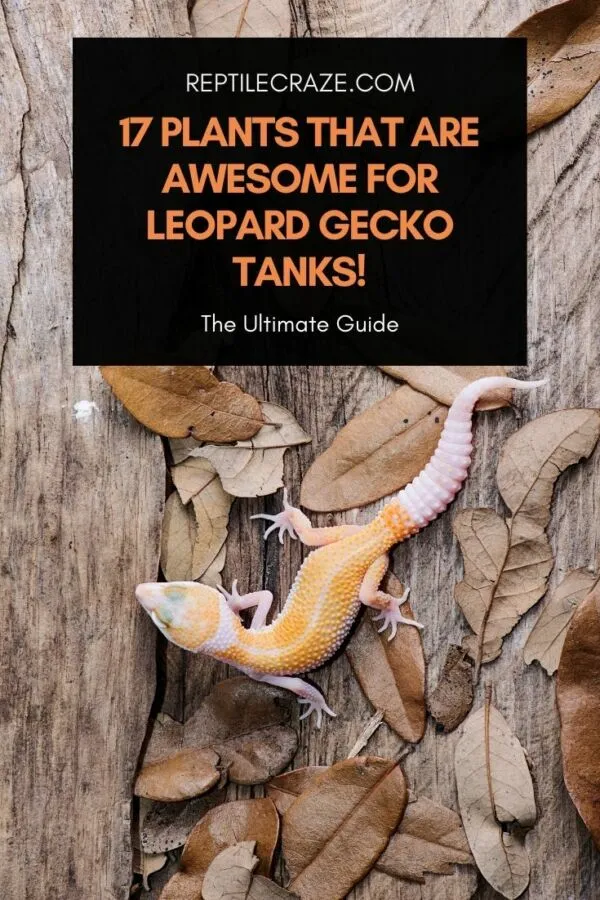
The other day at a pet shop, I saw a leopard gecko with only a few synthetic plants in its
So I decided to have a look at the wide variety of real plants that are awesome for leopard gecko tanks.
Let’s first have a look at some of the plants you can use in your leopard gecko’s
Table of Contents
1. Aloes
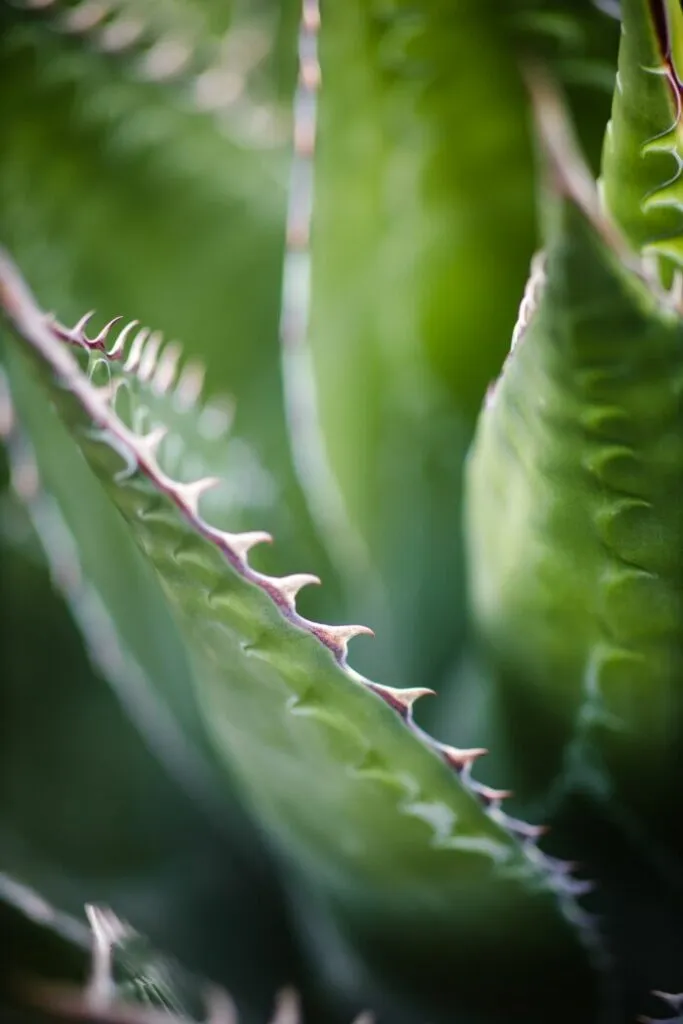
There are hundreds of aloe species and more than enough variety in their appearance that you’ll find one that you like. For example, some aloes like the lace aloe have a deeper green color, with the sunset aloe having a reddish to peach-colored tint to their leaves.
These Are Some Favorite Aloes for Your Leopard Gecko’s Tank
- Tiger Tooth Aloe (Aloe juvenna)
- Sunset Aloe (Aloe dorotheae)
- Short-leaved Aloe (Aloe brevifolia)
- Golden Tooth Aloe (Aloe nobilis)
- Lace Aloe (Aloe aristata) Get it here from a fantastic nursery!
- Somalian Aloe (Aloe somaliensis)
Tip! Some aloes can grow to be taller than an adult, so be careful when choosing an aloe for your leopard gecko’s
tank .
Although most aloes grow quite slow, you’ll need to keep an eye on them and may have to remove the “baby aloes” that grow from the original aloe and replant them.
2. Elephant Bush/Pork Bush/Spekboom (Portulacaria afra)
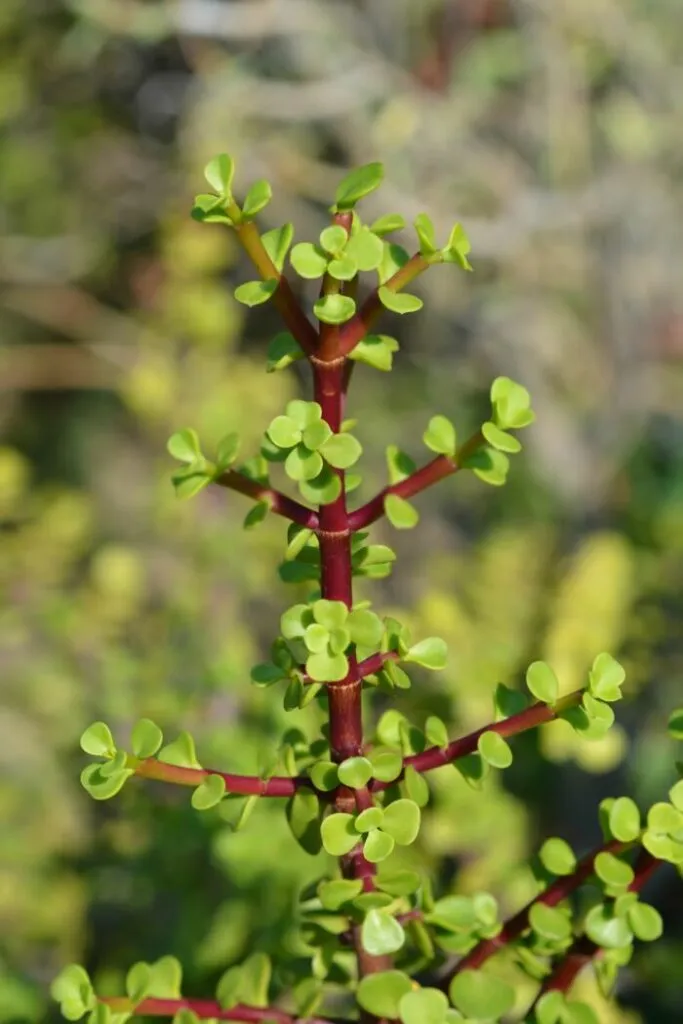
The elephant bush is a succulent that is often eaten by elephants and other animals and can grow up to 5 meters or 16 feet tall. Don’t worry, we’re not suggesting that you get a 16-foot-tall-tank!
Elephant bush is a favorite for making bonsai from and, if you keep the elephant bush in your leopard gecko’s
You can get an elephant bush plant here!
3. Tillandsia (Air Plants)

Air plants, which consists of over 650 species, grow by clinging to other plants or objects, like bark and wood. And, because they grow slowly and barely need watering most of the time (you’ll need to soak them in water every now and then), they’re the perfect plant for a leopard gecko’s
We recommend getting this pack of 12 small and medium live tillandsia from the Plants for Pets Store right here. The seller does not use any pesticides, these plants have a good size for leo tanks and they even come with a care guide. So these are perfect for leo tanks!
4. Mexican Spice Basil (Cinnamon Basil)
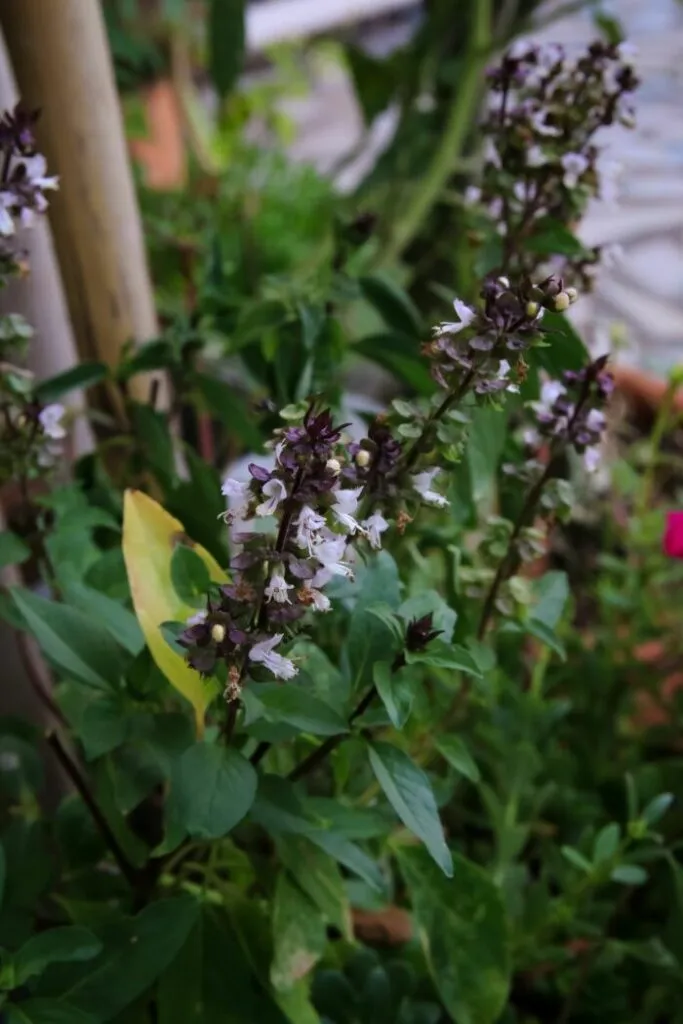
We know what you’re thinking – a herb? – but Mexican spice basil can be used as a scented ornamental in a bioactive leopard gecko
5. Christmas/Easter/Holiday Cactus (Schlumbergera)
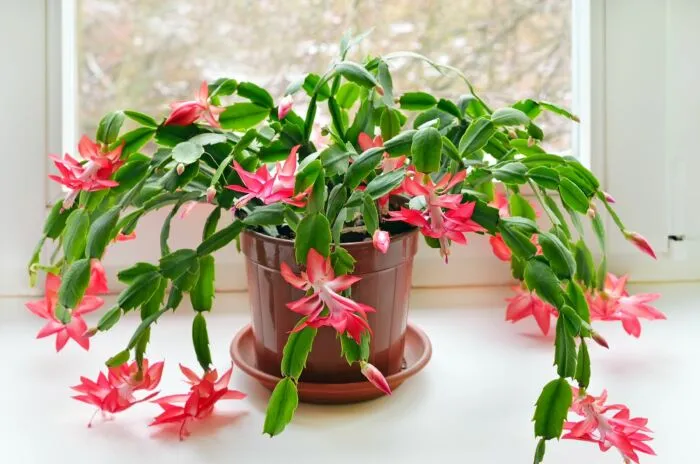
Although this succulent is called a cactus, you won’t have to worry about any spines that can hurt you leopard gecko as the fleshy leaves are smooth. These plants usually have beautiful red or pink flowers, although some white varieties also exist. Plus, “Schlumbergera” is a lot of fun to say.
Another slow grower, these succulents can get large after a few years, so you’ll have to replace it then.
Did You Know? You can propagate another Schlumbergera from one of the original one’s leaves – as with most succulents – and won’t have to buy another one.
6. String of Dolphins (Senecio peregrinus)
This cute succulent grows about six inches tall, making it a great size for a leopard gecko’s
7. String of Pearls (Senecio rowleyanus)
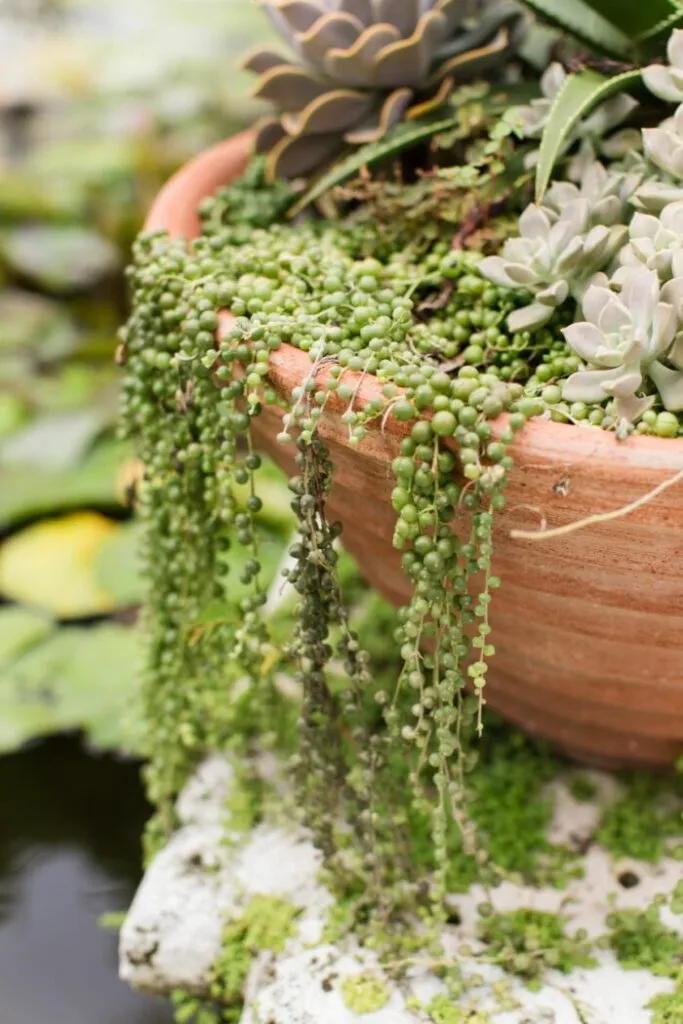
Hailing from southwest Africa is the string of pearls plant. When planted on the ground, it forms dense mats as it grows and spreads.
As it doesn’t grow very tall, it can easily be used in a
You can get the string of pearl plant here from the Fat Plants San Diego Store. It’s a great nursery that mostly sells succulents.
8. String of Bananas (Senecio radicans)
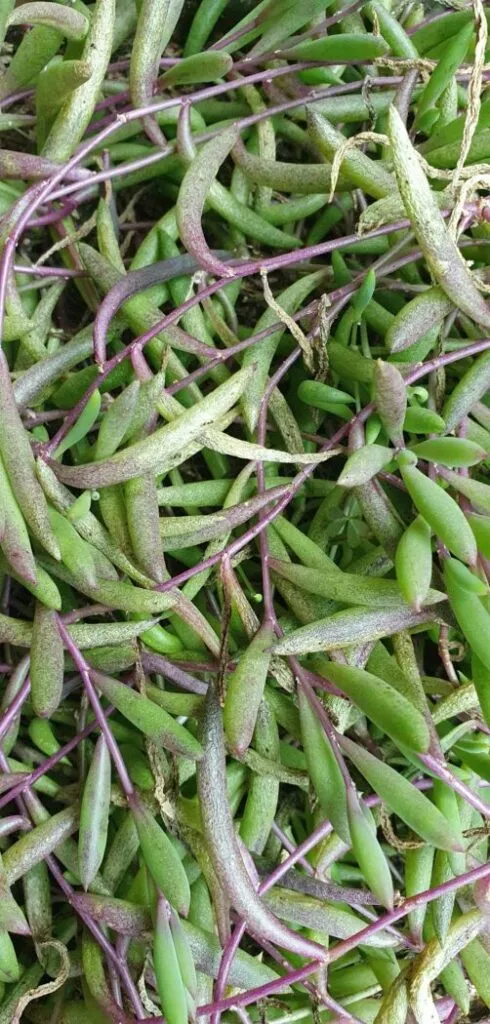
The string of bananas is another trailing succulent plant that you can use in your leopard gecko’s
9. Carex Grass/Sedge Grass
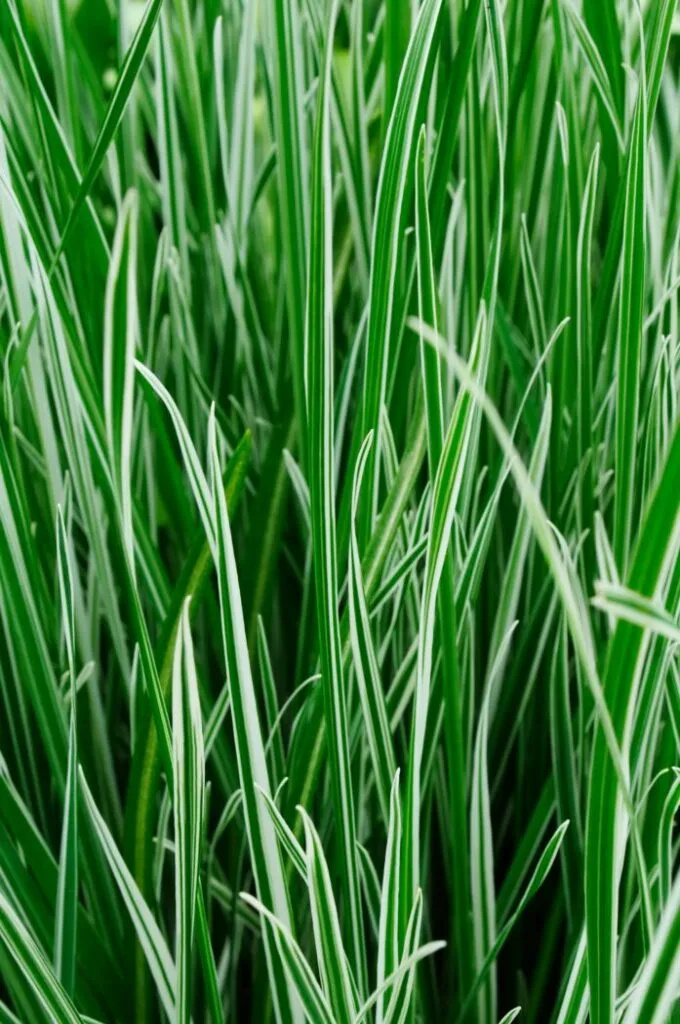
These evergreen, grass-like plants can grow anything from 6” to 30” high, depending on the type of sedge. It also does well in sun and shade. For your leopard gecko sedge grass can be something to clamber over and to hide under.
Why not try the smaller species of carex grass like
- Carex appalachica – 6” tall
- Carex bromoides – 6” tall
- Carex eburnean – 6” tall
- Carex radiata, “Halifax” – 8” tall
- Carex siderosticta – 8” tall
10. Echeverias
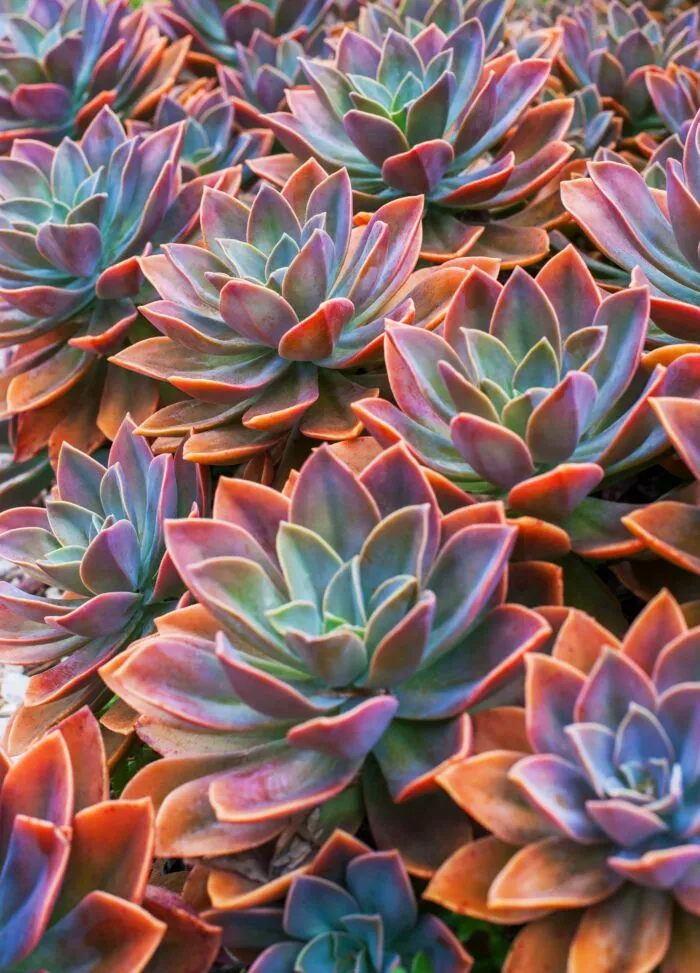
These mostly low-growing succulents have pointed or furled leaves and grow in beautiful rosettes. These can make a wonderful focal point in your leopard gecko’s
They can spread quite fast, so be sure to keep an eye out that they don’t take over!
Here are some of our favorite echeverias
- Echeveria subrigada
- Echeveria runyonii
- Echeveria setosa
- Echeveria nodulosaEcheveria lauii
- Echeveria “Black Knight”
- Echeveria “Soul Reaper”
Tank idea: For plants with a stark contrast, plant some Echeveria lauii, Black Knight and Soul Reaper together. While the Lauii is an almost bright white plants, the Black Knight and Soul Reaper are naturally an almost black color.
This 12 pack of succulent plants from Plants for Pets Store also contains echeverias combined with other succulents that are okay for pets. The plants look beautiful, are perfect for pets, and come with a care guide.
11. Money Plant/Jade Plant (Crassula ovata)
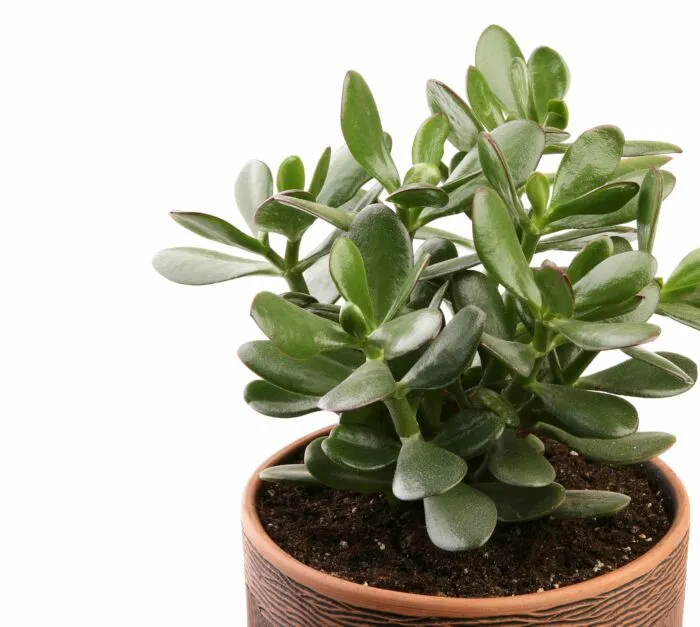
The money or jade plant looks similar to the elephant bush and is also native to South Africa. However, while the elephant bush can grow to 16 feet in height, the money plant only grows to about 3 feet tall and can be kept in check by simple trimming.
12. Zebra Cactus (Haworthiopsis attenuata)
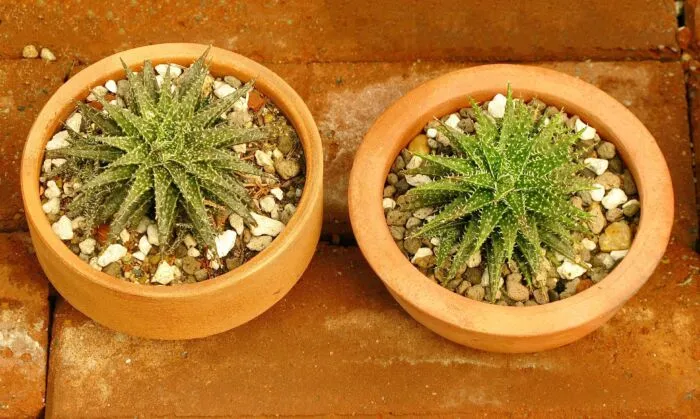
This beautiful succulent is very slow growing and works great in a leopard gecko
13. Sweetheart Wax Plant/Sweetheart Hoya (Hoya kernii)
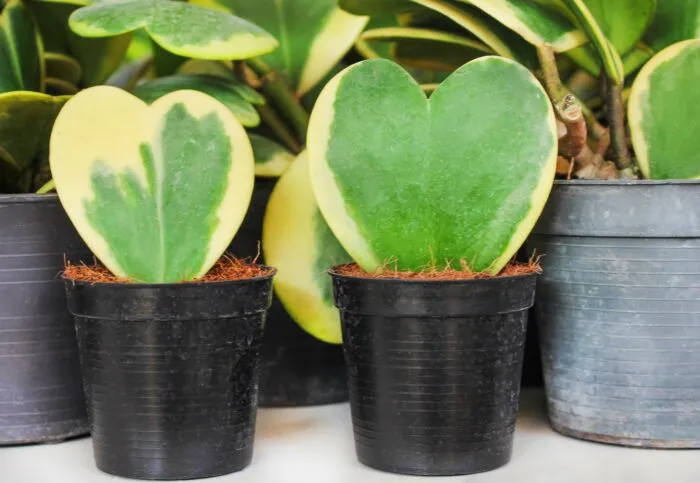
This cute succulent with its heart-shaped leaf is relatively small and requires little to keep it happy (and alive). A single leaf grows to about 5” tall and can make a great statement piece in a
If you’re just starting to test your green thumb, this is a good choice as a first plant.
14. Krinkle Kurl/Hindu Rope Plant (Hoya carnosa cf. compacta)
Another hoya that is quite the opposite of the sweetheart, is the krinkle kurl. This one’s curled leaves forms tendrils that can reach a few feet in length if left to its own devices. The krinkle kurl needs more water than the sweetheart, so planting them next to each other is not a great idea.
15. Lithops (Living Stones)

Living stones are some of the strangest plants out there. Most of the plant is beneath the soil surface and only it’s two leaves poke up above the ground.
And, yes, they look like pebbles when seen from above. These quite hardy plants hardly need watering and enjoy high temperatures, making them perfect for your leopard gecko’s
Our favorite lithops include
- Lithops marmorata, with its beautiful white flower
- Lithops pseudotruncatella, with its beautiful yellow flower.
16. Snake Plants/Mother In-Law’s Tongue (Dracaena trifasciata)
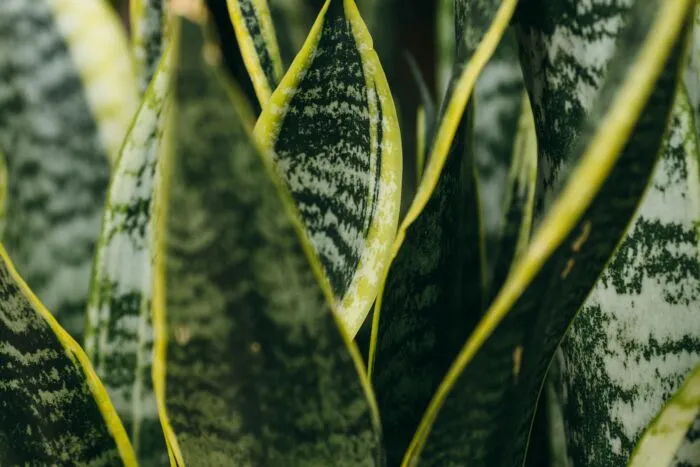
Another favourite for especially taller tanks, are snake plants. These are some of the hardiest plants and are (luckily) difficult to kill. Like the lithops and sweetheart hoya, they need only a little water every now and then to keep them happy and healthy.
Why not try these varieties of snake plants
- Sansevieria desertii ‘Rhino grass’, with its red-tinted leaves
- Sansevieria ‘Golden Hahnii’, with its yellow-bordered, short leaves
If you want to get snake plants without pesticides, have a look at these beautiful snake plants here!
17. Sempervivum (Hens and Chicks)
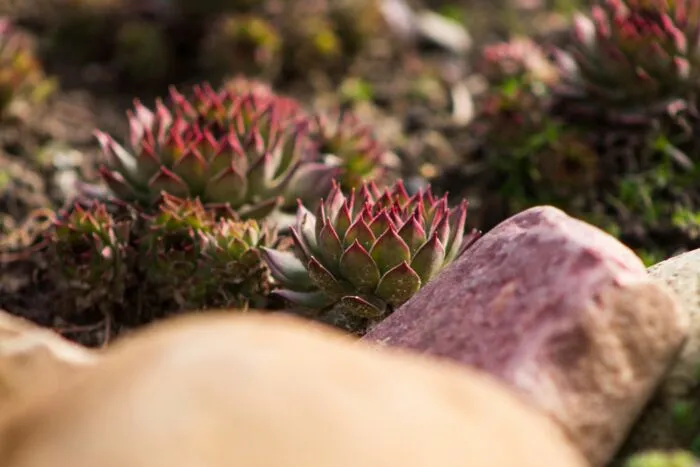
First off, make sure it’s the succulent sempervivum that you’re buying, as there are several plants that are called “hens and chicks”. This specific succulent also has a beautiful rosette-like appearance.
Sempervivum needs little watering, like other succulents, and the baby plants can easily be removed and repotted once the plant has grown too big.
Get sempervivum succulents here! Again, no pesticides and perfect for a leopard gecko
How to Choose Which Plants to Use in Your Leopard Gecko Tank
With such a variety of plants to choose from for your leopard gecko
Natural habitat
A succulent is a succulent, is a succulent, right? Well, not quite. Although most succulents will grow well together, it’s important to keep in mind that some need more water than others.
It’s therefore better to keep the succulents you choose for the
The last thing you want is to have plants next to each other that need different amounts of water and you end up killing one or both.
Tip! Aloes can be mixed with most other succulents, so if you’re just starting out, they can be a great – and beautiful – choice. Below is a list of safe succulents and plants and where they occur naturally.
Why knowing a plant’s maximum temperature is important
You should always be aware of the maximum temperature toleration that a plant, that you’re using in your leopard gecko’s
Knowing the best temperature to keep the plant at will tell you whether it should be planted on the cool side of the temperature gradient, on the hot side of the temperature gradient, or in the center of the
For example, lithops will grow even in the hottest part of the
Planting plants meant for the cool side of the
Using a heating mat or heat lamp when you have real plants in the tank
You can still use a heating mat for your leopard gecko when you have real plants in their tank. However, keep in mind that, in nature, the deeper you go into the soil, the cooler it gets.
So, when you use real plants in your leopard gecko
Don’t worry, though, you can still use a heating mat (if necessary) to get your leopard gecko’s
This will still send the heat into the
When it comes to heat lamps, ensure that you plant only plants (like lithops) where the heat of the basking lamp is the hottest. If you see that the plants that you’ve planted are suffering from the heat, simply move them further away from the heat source.
Tip! Keeping a close eye on your plants can also give you clues as to when the
tank is too hot in certain areas, or the humidity is too high.
Below is a list of safe succulents and plants for leopard gecko tanks, the temperatures they thrive at, and where they occur naturally. We’ve also added a watering schedule.
| Plant | Maximum Temperature and Natural Habitat | Watering Schedule |
| Aloes | (85°F) Africa (mostly), the Arabian Peninsula, Socotra, Madagascar, various Western Indian Ocean Islands | 1 to 2 times per month |
| Elephant bush/Spekboom | (110°F) South Africa, Mozambique | 1 to 2 times per month (needs only a little water) |
| Christmas cactus/ Schlumbergera | (90-100°F, but prefers the cooler side of the | 1 to 2 times per week |
| Tillandsia/Air plants | (90°F) Northern Mexico, south-eastern United States, Mesoamerica, Caribbean, mid-Argentina | Soak in water for up to two hours regularly. Spray with water every other day. |
| Mexican spice basil/ Cinnamon basil | (70°F) Originally south Asia, now propagated in the Americas and other parts of the world as well | Keep soil moist, but not wet. |
| String of dolphins | (72°F) Southwest Africa | 1 to 2 times per month |
| String of pearls | (72°F) East Africa | 1 to 2 times per month |
| String of bananas | (70°F) South Africa, Lesotho, Namibia | 1 to 2 times per month |
| Carex/Sedge grass | (100°F) Virtually across the world (make sure you choose one from a more arid region) | Once per week |
| Echeveria | (95°) Central America, Mexico, north-western South America | 1 to 2 times per month |
| Jade plant/Money plant | (75°F) South Africa | Once per week to twice per month |
| Zebra cactus | (80°F) South Africa | 1 to 2 times per month |
| Sweetheart hoya | (80°F) South-east Asia | 1 to 2 times per month |
| Krinkle kurl/Hindu rope plant | (70°F) Eastern Asia, Australia | 1 to 2 times per month |
| Lithops/Living stones | (105°F) Namibia, South Africa, borders of Botswana | Once every two to three weeks. (Need very little water.) |
| Snake plants | (80°F) Tropical and sub-tropical Africa, Europe, Asia | Once every 2 to 3 weeks (wait for soil to dry completely before watering again.) |
| Sempervivum/Hens and chicks | (80°F) Central Europe, Southern Europe, Mediterranean islands | 2 to 3 times per month |
Size as juvenile and mature plants vs. the size of your leopard gecko’s tank
With hundreds of types of succulents and plants that you could use in a leopard gecko’s
Again, you’re going for a desert-like appearance, not a jungle! So, for example, instead of using an elephant bush, you can use a jade plant as they look similar, but a jade plant is much smaller and needs less upkeep than an elephant bush.
If you’re starting out with a smaller
Ease of care of the plants
If you don’t have a green thumb, or you just don’t want to have to trim plants often, you should investigate slower growing plants or mature plants that are small enough to fit in the
The overall look you want to achieve and the plants you really like
In the end, you should choose plants that is not only suitable for the
You can also decide on a theme for the plants, for example
- Only red, orange, and peach plants
- Only different dark green or light green plants
- Using only purple and green plants
- Using plants that all have flowers of the same colour
- Using only black and white echeveria
How to Choose a Healthy Plant for Your Leopard Gecko Tank
When you buy plants for your leopard gecko
Plants with the following signs should be avoided
- Succulents with swollen, almost transparent leaves, as they have been overwatered and may start to rot and/or loose all its leaves.
- Succulents or plants with black leaves (unless it’s something like a black knight or soul reaper echeveria that are black naturally), as this could be sickness or rot due to overwatering.
- Succulents with shrivelled or dried leaves, as those are signs of underwatering and/or sickness.
- Plants that are obviously sick, like succulents with mushy instead of firm leaves. Be especially careful of fungal infections as that could spread to the other plants in the
tank . You also don’t want to use fungicides on the plants in your leopard gecko’stank !
How to Buy Plants for Your Leopard Gecko Tank
When buying plants for your leopard gecko tank , always
- Buy from a reputable nursery or pet store. As we already told you, we highly recommend the Plants for Pets Store on Amazon – Check it out here!
- Make sure that no fungicides, insecticides – well, any kind of poison, really – have been used on the plants. The poison may still be present on the leaves or stems and could make your leopard gecko terribly ill or even lead to its death.
- Make sure that the plant is healthy from leaves to roots before buying it and planting it in your leopard gecko’s
tank . If the plant looks sick and rotted just above the ground, that likely means that the roots of the plant is also sick or rotted, so steer clear.
Conclusion
There are a variety of plants and succulents that you can use in your leopard gecko’s
When you do decide on plants, you should always keep their mature size in mind as some of the types of aloes and succulents can grow far larger than your leopard gecko’s
You also don’t have to keep the same plants in the
- Enchi Ball Python: A Unique and Stunning Morph of Python regius - March 27, 2025
- Emerald Tree Monitor: The Enigmatic Green Guardian of the Rainforest - March 26, 2025
- The Egyptian Cobra (Naja haje): A Fascinating Serpent - March 25, 2025
